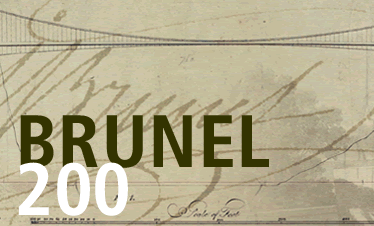
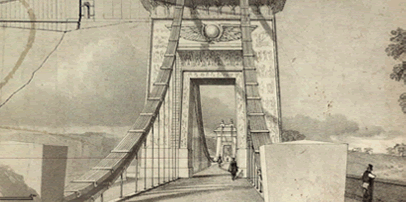
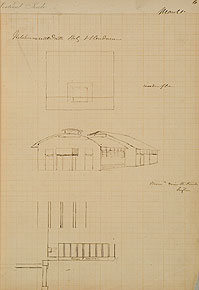
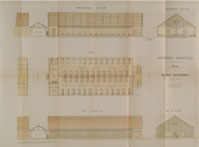
Sketch and plan of Renkioi hospital
(University of Bristol)
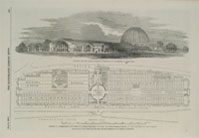
Original proposal for Great Exhibition
Hall (University of Bristol)
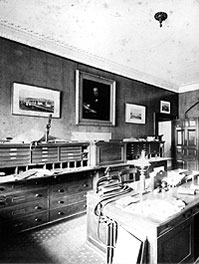
Brunel’s office at his home in Duke
Street, London (Elton Engineering)
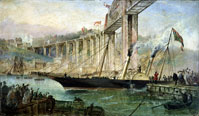
Opening of Royal Albert Bridge
(Elton Collection: Ironbridge Gorge
Museum Trust)






The
1840s and 1850s
Brunel worked long hours and was frequently away on business, but still
found time to entertain his children with nursery games and conjuring.
In 1843, he accidentally swallowed a half-sovereign he was using in one
of his tricks. It lodged in his windpipe and threatened to choke him to
death. A tracheotomy was performed by a leading surgeon with two-foot
long forceps but was unsuccessful. Showing his ingenuity and sang-froid,
Brunel devised a board, pivoted between two uprights, to which he was
strapped and rapidly turned head over heels. The centrifugal force dislodged
the coin, which dropped from his mouth.
In 1850, Brunel became involved in preparations for the Great
Exhibition of Science and Industry of All Nations to be held in Hyde Park
the following year. He contributed to early designs for an exhibition
space and in the arrangements for the opening parade. When Paxton’s
Crystal Palace was relocated to Sydenham, Brunel designed two water towers
for the site. (Read more about the Great Exhibition on the Arts
and Culture page).
In 1853, work began on Brunel’s biggest maritime project: the ss
Great Eastern. (Read more about the ship on the Major
Projects page). At the same time, Brunel was also supervising the
construction of another of his engineering triumphs, the Royal Albert
Bridge which carried the Cornwall Railway line over the Tamar at Saltash.
This was completed in 1859.
In February 1855, Brunel was invited by the Permanent Under
Secretary at the War Office, Sir Benjamin Hawes (husband of his sister
Sophia), to design a pre-fabricated hospital for use in the Crimea that
could be built in Britain and shipped out for speedy erection at a chosen
site. The design took six days to complete and the parts reached Renkioi
in the Dardanelles in May that year. By July it was ready to admit its
first 300 patients and by December had reached its capacity of 1,000 beds.
On his doctor’s advice, Brunel travelled to the Alps, Vichy and
Egypt during 1858. He was suffering from Bright’s disease and had
endured years of physical and mental strain. On Christmas Day he dined
in Cairo with Robert Stephenson, his old friend and colleague, who had
similarly ruined his health through overwork. Despite deriving some initial
benefit from the change of scene, when Brunel returned to Britain the
stress associated with the ss Great Eastern project intensified and he
collapsed with a stroke on 5 September 1859. He died at his Westminster
home ten days later.
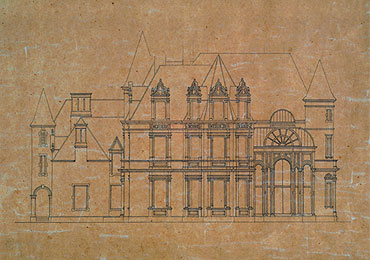
Architect’s drawing of Brunel’s proposed home
on his Watcombe estate
(University of Bristol)
Brunel was buried in Kensal Green Cemetery on 20 September 1859. The route
to the cemetery was lined with thousands of railwaymen and members of
the public. His friend and colleague Daniel Gooch wrote in his diary:
I lost my oldest and best friend... By his death the greatest of England’s
engineers was lost, the man with the greatest originality of thought and
power of execution, bold in his plans but right. The commercial world
thought him extravagant; but although he was so, great things are not
done by those who sit down and count the cost of every thought and act.
